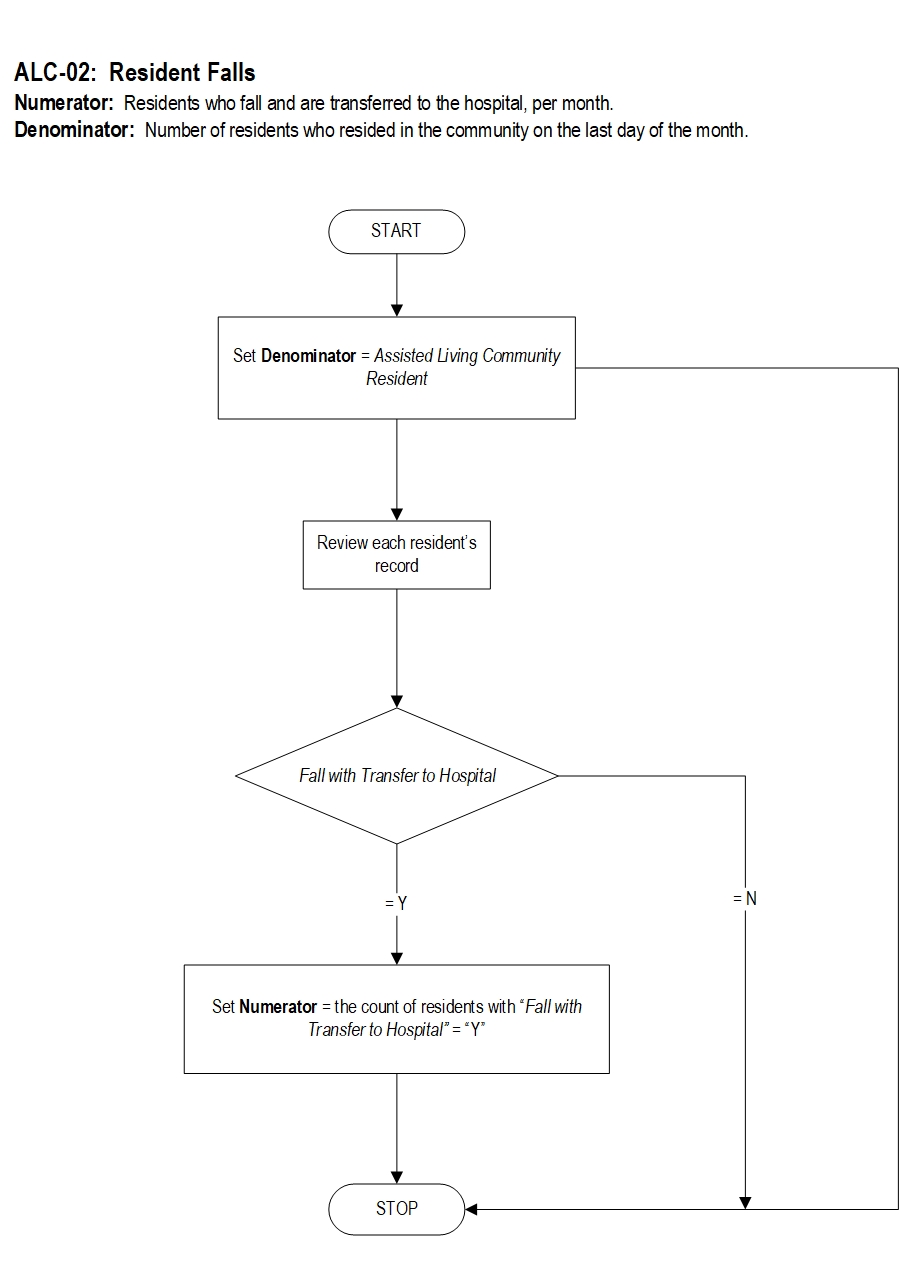Assisted Living Community Measures (v2026A)
Posted: 08/04/2025
Release Notes:
Measure Information Form
Version 2026A
Measure Information Form
Version 2026A
Measure Information Form
Numerator Statement: Residents who fall and are transferred to the hospital, per month.
Risk Adjustment: No.
Data Collection Approach:
Denominator: The total number from the data element Assisted Living Community Resident is the Denominator. Included Populations: Not applicable Excluded Populations: Not applicable Data Elements:Denominator Statement: Number of residents who resided in the community on the last day of the month.
Included Populations: Not applicable Excluded Populations: Not applicable Data Elements:
- This number will be entered into the Direct Data Submission Platform (DDSP) tool.
- This number will be entered into the Direct Data Submission Platform (DDSP) tool.
Example: You are abstracting cases for the month of August. On August 31st there are 85 residents living at the assisted living community. Your denominator will be 85. When you look back through the 85 resident’s records, there were 4 residents that fell and were transferred to the hospital. Your numerator will be 4.
Denominator = 85Numerator = 4 Data Accuracy: None Measure Analysis Suggestions: None Sampling: No. Data Reported As: Aggregate rate generated from count data reported as a proportion. Selected References:
- Centers for Disease Control and Prevention. (2016). Behavioral Risk Factor Surveillance System (BRFSS) data. Retrieved from https://www.cdc.gov/steadi/
- Centers for Disease Control and Prevention, National Center for Injury Prevention and Control. (2024). Web-based Injury Statistics Query and Reporting System (WISQARS) [online]. Retrieved March 11, 2024, from https://wisqars.cdc.gov/
- García-Martínez, A., García-Rosa, S., Gil-Rodrigo, A., et al. (2024). Prevalence and outcomes of fear of falling in older adults with falls at the emergency department: A multicentric observational study. European Geriatric Medicine, 15(6), 1281–1289. https://doi.org/10.1007/s41999-024-00992-1
Measure Algorithm:

ALC-02: Resident Falls Algorithm Narrative
Numerator: Residents who fall and are transferred to the hospital, per month.
Denominator: Number of residents who resided in the community on the last day of the month.
1. Start processing and proceed to set Denominator.
2. Set Denominator equal to Assisted Living Community Resident.

Numerator: Residents who fall and are transferred to the hospital, per month.
Denominator: Number of residents who resided in the community on the last day of the month.
1. Start processing and proceed to set Denominator.
2. Set Denominator equal to Assisted Living Community Resident.
- Set Assisted Living Community Resident as denominator. Continue processing and proceed to Review each resident’s record.
- Review each resident’s record. Continue processing and proceed to Fall with Transfer to Hospital.
- If Fall with Transfer to Hospital equals “N”. Stop processing.
- If Fall with Transfer to Hospital equals “Y”. Continue processing and proceed to Set Numerator.
- Set Numerator equal to the count of residents with Fall with Transfer to Hospital equal to “Y”. Stop processing.
Questions? Ask Question to Joint Commission staff
Copyright © 2025 by The Joint Commission.